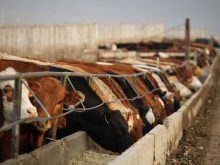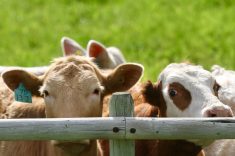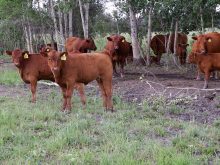For the week ending March 21, western Canadian feeder cattle markets were relatively unchanged compared to seven days earlier.
Prices continue to hover near or at historical highs.
There appeared to be larger volumes on offer this week with the looming potential U.S. tariffs set for April 2.
Read Also

House ag committee to undertake several studies
The House of Commons standing agriculture committee has set its agenda for the coming months. Members began the fall sitting with a two-hour update on international trade
Cow-calf and backgrounding operators were selling cattle ahead of schedule, which may have capped the upside this week. Feedlot operators continue to shrug off tariff fears.
Low flesh replacements heavier than 750 pounds were very well bid. Heifer prices were more variable, especially on groups heavier than 850 lb.
Flesh conditions on heifers are harder to control in the heavier weight categories, and buyers were quick to discount accordingly.
Calves lighter than 600 lb. also varied by as much as $10 across the Prairies.
Buyers shopping for grass cattle were second bidders to the feedlot operators, but this demand limited any price slippage.
In central Alberta, larger frame Simmental cross steers carrying lighter butter on light grain and silage diet with full processing data averaging 900 lb. traded for $375.
At the Ponoka, Alta., sale, a large package of red mixed heifers weighing 868 lb. on rolled barley and corn silage diet with full processing data sold for $355.
North of Saskatoon, mixed steers carrying medium flesh levels weighing 875 lb. coming off backgrounding grain diets with full processing records reportedly traded for $377 f.o.b. the farm.
At the St Rose Auction in Manitoba, the market report had Charolais steers weighing 846 lb. selling for $385.
East of Edmonton, a small package of Angus blended heifers carrying medium flesh averaging 800 lb. sold for $355. South of Edmonton, black, wide frame Limousin based heifers evaluated at 800 lb. with lower flesh levels were last bid at $367.
Southeast of Calgary, Charolais cross steers weighing 680 lb. reportedly traded for $455. South of Edmonton, tan steers with a mean weight of 600 lb. notched the board at $495. North of Calgary, red mixed heifers averaging 630 lb. reportedly settled at $431.
At the Lloydminster sale, a smaller package of black steers weighing 516 lb. silenced the crowd at $571.
In southern Manitoba, a smaller package of black mixed steers weighing 507 lb. reportedly moved through the ring at $505.
North of Calgary, a handful of mixed fully weaned steers with full preconditioning averaging 525 lb. reached up to $580.
Northwest of Winnipeg, red mixed steers weighing 460 lb. reportedly dropped the gavel at $582.
Market-ready supplies in the short term are extremely tight. Alberta and Saskatchewan cattle on feed 150 days or longer as of March 1 were only 45,609 head, down 84,586 head from last year.
Alberta packers were buying fed cattle on a dressed basis in the range of $450-$455 per hundredweight delivered, unchanged from the week ending March 14.
Feeding margins continue to hover in positive territory, which is supportive for the feeder complex. The market is rationing demand at the current levels.
Retail prices have moved higher, and buyers are starting to back away at the higher levels. U.S. and Canadian economies are expected to contract in the first half of 2025.
Incoming replacements in the range of 750-900 lb. have a break-even fed cattle price of around $470 per cwt. for July and August.
Feedlot operators are counting on a stronger market for the summer months, which may be difficult to justify.
Jerry Klassen is president and founder of Resilient Capital, specializing in proprietary commodity futures trading and market analysis. He can be reached at 204-504-8339 or via his website at resilcapital.com.

















